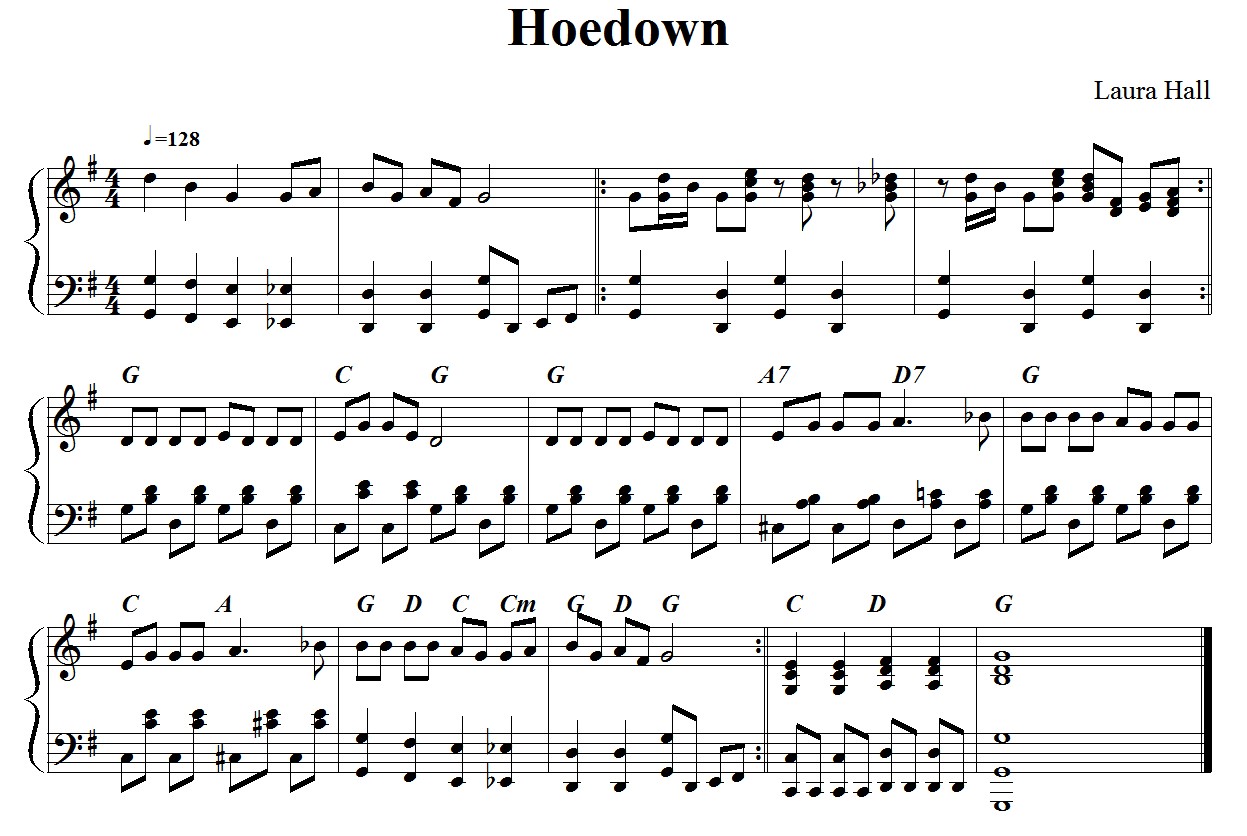Home>Production & Technology>Music Theory>How To Create A Bass Line Music Theory


Music Theory
How To Create A Bass Line Music Theory
Modified: January 31, 2024
Learn how to create a bass line with our comprehensive music theory guide. Understand the principles behind music theory and elevate your compositions.
(Many of the links in this article redirect to a specific reviewed product. Your purchase of these products through affiliate links helps to generate commission for AudioLover.com, at no extra cost. Learn more)
Table of Contents
- Introduction
- Understanding the Basics of Bass Lines
- Melody Vs. Bass: Knowing the Difference
- Essential Elements of a Solid Bass Line
- Finding the Root Note
- Using Chord Tones to Create Movement
- Incorporating Passing Tones for Added Interest
- Rhythmic Considerations for an Effective Bass Line
- Adding Articulation and Dynamics
- Creating Variation and Filling in the Gaps
- Common Techniques for Crafting Memorable Bass Lines
- Conclusion
Introduction
When it comes to music, the bass line plays a crucial role in providing harmony, rhythm, and groove. It serves as the foundation of a song, connecting the rhythm section with the melody. Whether you’re a bass player looking to enhance your skills or a songwriter seeking to create a memorable bass line, understanding the fundamentals of bass line music theory is essential.
In this article, we will delve into the world of bass line theory and explore the various elements that make a bass line successful. We will discuss the differences between melody and bass, the importance of finding the root note, and how chord tones and passing tones can add movement and interest to your bass lines. Additionally, we will explore the rhythmic considerations, articulation, dynamics, and the role of variation in creating an effective bass line.
Through a comprehensive understanding of these concepts and techniques, you can elevate your bass playing skills and create bass lines that not only drive the music forward but also leave a lasting impression on the listener.
So, whether you’re starting your musical journey or are a seasoned musician looking to expand your knowledge, join us as we dive into the fascinating world of bass line music theory and discover the secrets to crafting compelling bass lines.
Understanding the Basics of Bass Lines
A bass line is a melodic line played by a bass instrument, typically a bass guitar or a double bass. It serves as the foundation for the harmony and rhythm of a song, providing a solid backbone that connects the various elements of the music. To understand how to create an effective bass line, it is essential to grasp the following key concepts.
Melody Vs. Bass: Knowing the Difference
While melody and bass are both important components of a musical composition, they serve different purposes. Melody refers to the catchy and memorable series of notes that carry the main theme of the song. On the other hand, the bass line focuses on providing a low-frequency foundation that supports the harmony and rhythm. It often follows the chord progression of the song and acts as a bridge between the melody and the rhythm section.
Essential Elements of a Solid Bass Line
A well-crafted bass line incorporates several essential elements to create a strong foundation for the music:
- Finding the Root Note: The root note is the foundational note of a chord. Identifying and emphasizing the root notes of the chords being played is crucial for creating a strong bass line. It helps establish the harmony and gives the listener a sense of stability.
- Using Chord Tones to Create Movement: Chord tones are the notes that make up a chord. Utilizing these tones in the bass line adds movement and helps define the harmonic structure of the song. Playing the root, third, and fifth of each chord can create a solid and supportive bass line.
- Incorporating Passing Tones for Added Interest: Passing tones are non-chord tones that connect chord tones. Introducing these notes in the bass line can add interest and create melodic movement. It’s essential to use passing tones judiciously to maintain the overall harmonic structure of the song.
By understanding and incorporating these elements in your bass line composition, you can start building a strong foundation and enhancing the overall musical expression. In the next section, we will explore how to find the root note and use chord tones effectively in creating an engaging bass line.
Melody Vs. Bass: Knowing the Difference
When it comes to music, melody and bass are two distinct yet interconnected elements that contribute to the overall composition. Understanding the difference between melody and bass is vital for effective music theory and composition.
Melody:
A melody is a sequence of notes that forms a recognizable musical phrase or line. It is often the most prominent and memorable part of a composition. Melodies are typically played by instruments like the piano, guitar, or sung by a vocalist. Melodies often convey the main theme or emotional essence of a song, and they are usually found in the higher pitches of the musical range.
Melodies can be simple or complex, but they generally consist of a combination of pitches, rhythm, and phrasing. They can include repetition, variation, and development to create musical interest and dynamics. Melodies are the focal point of a song, capturing the listener’s attention and eliciting emotional responses.
Bass:
Bass serves a different role in music. It is the lowest-pitched part of a musical composition and typically played by instruments like the bass guitar or double bass. The bass line provides the foundation for the harmony and rhythm of a song. It supports and connects the melody to the rhythm section, acting as a bridge between the two.
The primary function of the bass line is to outline the harmonic structure of a composition. It does this by playing the root notes of the chords being played. The bass player must have a good understanding of chord progressions and how to create movement within them. The bass line can provide a sense of stability, giving the music a solid foundation and grounding the other instruments and vocals.
Interplay Between Melody and Bass:
The interplay between melody and bass is crucial to creating a well-rounded and harmonically-rich musical composition. The bass line provides a rhythmic and harmonic context for the melody, making it sound more grounded and complete. Conversely, the melody brings life and expression to the composition, providing a contrast to the low-frequency foundation of the bass line.
By understanding the distinction between melody and bass and how they interact, musicians can effectively create compositions that are balanced and musically engaging. In the next section, we will explore the essential elements of a solid bass line and how to integrate them into your music.
Essential Elements of a Solid Bass Line
A solid bass line is the backbone of a song, providing a strong foundation and supporting the overall musical structure. It not only connects the rhythm section with the melody but also adds depth, groove, and movement to the composition. To create an effective bass line, several essential elements need to be considered:
- Finding the Root Note: The root note is the foundational note of a chord. In a bass line, it is crucial to identify and emphasize the root notes of the chords being played. By playing the root note of each chord, you establish the harmonic foundation of the song and provide a sense of stability. Understanding chord progressions and their corresponding root notes is key in creating a solid bass line.
- Using Chord Tones to Create Movement: Chord tones are the notes that make up a chord. Incorporating chord tones in your bass line can add movement, depth, and a sense of harmony to the composition. By playing the root, third, and fifth of each chord, you outline the essential harmonic structure of the song. The root provides stability, the third adds color, and the fifth adds a sense of power and resolution.
- Incorporating Passing Tones for Added Interest: Passing tones are non-chord tones that bridge the gap between two chord tones. Introducing passing tones in your bass line can add interest and create melodic movement. These tones help connect the chord tones smoothly and create a sense of musical flow. However, it’s important to use passing tones judiciously to ensure they don’t disrupt the overall harmonic structure of the song.
By understanding and incorporating these elements in your bass line composition, you can create a solid foundation that enhances the musical expression. The root note establishes the harmony, while the chord tones and passing tones add movement, interest, and melodic flow.
It’s also essential to consider the rhythmic aspect of a bass line. The way you place the notes rhythmically can greatly affect the feel and groove of the music. Experiment with different rhythmic patterns and syncopations to find the right balance between driving the song forward and providing a solid rhythmic foundation.
Additionally, dynamics and articulation play a significant role in the impact of a bass line. Varying the volume and attack of your playing can create nuance and add a dynamic and expressive quality to the bass line. A well-executed bass line with subtle dynamic variations can elevate the overall musical experience.
In the next section, we will explore how to find the root note and use chord tones effectively in creating an engaging bass line.
Finding the Root Note
One of the foundational elements in creating a solid bass line is finding and emphasizing the root note of each chord. The root note serves as the foundation for the entire chord and provides a sense of stability and harmony. By understanding how to find the root note, you can create a bass line that effectively supports the melody and other harmonic elements of a composition.
Identifying the Chord Progression:
The first step in finding the root note is identifying the chord progression of the song. The chord progression outlines the sequence of chords that are played throughout the composition. Understanding the chords being used in a song is essential for determining the root notes to be played in the bass line.
Using Chord Shapes and Voicings:
If you’re playing a stringed instrument like a bass guitar, you can use chord shapes and voicings to help find the root notes. Chord shapes are specific fingerings on the instrument that represent different chords. By playing the chord shapes and focusing on the lowest note being played, you can identify the root note of each chord. This technique is especially helpful if you’re playing in a band setting where you can hear the other instrumentalists playing the chords.
Listening for the Bass Line in the Song:
When learning a song, it can be helpful to listen for the bass line that is played in the original recording. Focus on the low-frequency sounds and try to identify the driving notes that provide the foundation for the other instruments. By listening carefully, you can pick up on the root notes that are being played and incorporate them into your own bass line interpretation.
Understanding Music Theory:
Having a basic understanding of music theory can greatly assist in finding the root notes of chords. In Western music, chords are typically built using a root note, a third, and a fifth. By knowing the relationship between these notes, you can determine the root note by recognizing the intervals between the different chord tones. For example, if you hear a chord with a major third and a perfect fifth, you can deduce that the root note is likely the note that is a perfect fourth below the major third.
By finding and emphasizing the root note in your bass line, you establish a solid foundation for the harmony of the song. The root note provides stability and connects the other chord tones, giving the music a sense of structure and cohesion. In the next section, we will explore how to use chord tones effectively in creating a captivating bass line.
Using Chord Tones to Create Movement
Chord tones are the fundamental notes that make up a chord. They play a crucial role in creating a strong and compelling bass line. By incorporating chord tones into your bass line, you can add movement, depth, and a sense of harmony to the composition.
Understanding the Importance of Chord Tones:
Chord tones are the notes that define the underlying harmony of a song. They provide a sense of stability and help establish the chord progression. By playing the root, third, and fifth of each chord, you outline the essential harmonic structure of the song. The root note provides a reference point and serves as the foundation, the third adds color and determines if the chord is major or minor, and the fifth adds a sense of power and resolution.
Creating Movement with Chord Tones:
While playing the root, third, and fifth of each chord can create a solid and supportive bass line, incorporating additional chord tones can add movement and interest. Experiment with playing different chord inversions and extensions to create melodic movement within the bass line.
You can also use arpeggios to create movement. An arpeggio is a broken chord, where the notes of the chord are played one after another instead of simultaneously. By playing arpeggios within the bass line, you can create a sense of momentum and direction.
Walking Bass Lines:
One popular technique for using chord tones to create movement is called “walking bass.” In a walking bass line, the bass player plays a note on every beat or subdivision of the beat, emphasizing chord tones and moving smoothly from one chord to another. This technique creates a sense of forward motion and creates interesting melodic lines within the bass part.
Connecting Chord Tones Smoothly:
When using chord tones in your bass line, it’s important to connect them smoothly to create a seamless transition between chords. This can be achieved by using passing tones or using the technique of voice leading, where you move from one chord tone to the next by the smallest possible interval.
By understanding the importance of chord tones and incorporating them effectively in your bass line, you can create movement, depth, and harmony in your music. In the next section, we will explore the use of passing tones to add interest and complexity to your bass lines.
Incorporating Passing Tones for Added Interest
Passing tones are non-chord tones that connect two chord tones in a bass line. These additional notes can add interest, complexity, and melodic movement to your bass lines. Incorporating passing tones effectively can take your bass line to the next level and capture the listener’s attention.
Adding Melodic Movement:
Passing tones create a sense of melodic motion within the bass line. They connect the different chord tones smoothly, allowing for a more interesting and fluid transition between chords. By strategically placing passing tones, you can create a sense of anticipation, tension, and release within the bass line, enhancing the overall musical experience.
Using Neighboring Tones:
One common type of passing tone is the neighboring tone, also known as an auxiliary note. Neighboring tones are one step above or below a chord tone and are played quickly before moving back to a chord tone. These tones create a brief tension and release effect, adding musical color and intricacy.
Utilizing Chromatic Passing Tones:
Chromatic passing tones involve using notes that are outside of the key signature to connect chord tones. By introducing chromatic passing tones, you can add a sense of surprise and tension to your bass line. These tones can create unique melodic lines and unexpected harmonies, adding complexity and interest to the music.
Blending Passing Tones with Chord Tones:
While passing tones can add interest and movement to a bass line, it’s crucial to strike a balance and not overuse them. Too many passing tones can disrupt the stability and clarity of the underlying chord progression. It’s important to blend passing tones harmoniously with chord tones and allow the chord tones to be the foundation of the bass line.
Listening and Experimenting:
Developing a good ear for passing tones takes practice and attentive listening. Take the time to study and analyze bass lines in different musical genres to understand how passing tones are used and how they contribute to the overall composition. Experiment with different passing tones, rhythms, and musical contexts to find unique ways to incorporate them into your bass lines.
By incorporating passing tones effectively, you can elevate the complexity and interest of your bass lines. These additional notes add melodic movement, tension, and surprise, capturing the listener’s attention and enhancing the overall musical experience. In the next section, we will explore the rhythmic considerations for creating an effective bass line.
Rhythmic Considerations for an Effective Bass Line
When it comes to crafting an effective bass line, the rhythmic aspect plays a crucial role. The rhythm of the bass line creates the groove, drives the music forward, and interacts with other rhythmic elements in the composition. Understanding and implementing rhythmic considerations can greatly enhance the impact and effectiveness of your bass line.
Syncopation and Off-Beat Accents:
One way to create rhythmic interest in a bass line is through syncopation and off-beat accents. Syncopation involves accenting or emphasizing notes on off-beats, between the main beats of the measure. By introducing syncopation, you create a sense of tension, energy, and groove in your bass line.
Varying Rhythmic Patterns:
Repeating the same rhythmic pattern throughout a song can become monotonous. To keep the bass line fresh and engaging, experiment with varying the rhythmic patterns. Play with different note durations, rests, and rhythmic subdivisions to create variety and interest in your bass line. This adds musical depth and keeps the listener engaged throughout the song.
Locking In with the Drum Groove:
The bass line serves as the rhythmic foundation of the song, along with the drums. To create a tight and cohesive rhythm section, it’s important for the bass player to lock in with the drum groove. Listen to the drummer’s kick drum and snare patterns, and complement them with your bass line. This synchronization enhances the overall rhythmic feel of the music and creates a solid foundation for other instruments to build upon.
Incorporating Rhythmic Fills:
Rhythmic fills are short musical phrases or patterns played between the main beats of the measure. They add flair and excitement to the bass line, creating tension and anticipation for the listener. Incorporating well-placed fills can enhance the dynamic and rhythmic variation of your bass line, making it more engaging and memorable.
Playing with Dynamics:
The dynamics of your bass line, or the variations in volume and intensity, can greatly influence the overall impact of the music. Experiment with playing softer during certain sections to create tension, and then build up to stronger and more pronounced notes to release that tension. Dynamics add depth and emotional expressiveness to your bass line.
Working with the Song Structure:
Consider the song structure when crafting your bass line. Different sections of the song may require different rhythmic approaches. For example, you may want a solid and steady groove during the verses and a more energetic and rhythmic variation during the chorus. Tailor your bass line’s rhythm to support the mood and energy of the song sections.
By considering these rhythmic elements in your bass line composition, you can create a rhythmically compelling foundation that supports and enhances the overall musical experience. In the next section, we will explore the importance of articulation and dynamics in shaping your bass line.
Adding Articulation and Dynamics
Articulation and dynamics are essential elements in shaping the overall expression and impact of your bass line. By carefully considering how you articulate and control the dynamics of your playing, you can add nuance, emotion, and character to your bass line.
Articulation:
Articulation refers to the way you attack and release each note. The articulation choices you make can greatly affect the overall feel and groove of your bass line. Experiment with different techniques such as playing with fingers, using a pick, or a combination of both. Each method produces a unique sound, allowing you to explore different tonal qualities and textures.
Additionally, explore different articulation techniques such as staccato (short and detached), legato (smooth and connected), or using slides and hammer-ons. These techniques can help shape the melodic flow and rhythmic drive of your bass line.
Dynamics:
Dynamics refer to the variations in volume and intensity within your bass line. Controlling dynamics adds depth and expressiveness to your playing. Consider the overall dynamics of the song and adjust your playing accordingly. For example, during a quiet or more intimate section of the song, play softly with a delicate touch. As the song builds up, gradually increase the volume and intensity to match the rising energy.
Using dynamics can also help create contrasts within your bass line. Play some sections with a strong and punchy attack, and others with a gentler touch. This variation in dynamics can make your bass line more interesting and engaging to the listener.
Effective Note Length:
The length of each note in your bass line also contributes to its overall articulation and dynamics. Experiment with different note lengths to create rhythmic interest. Play some notes short and staccato, and others longer and sustained, depending on the desired effect. Varying note lengths adds a sense of musical phrasing and breathes life into your bass line.
Using Accents:
Accents are emphasized notes within a phrase or pattern. Adding accents at strategic points can create a sense of emphasis and highlight specific melodic or rhythmic elements in your bass line. Accented notes can be played with a slightly stronger attack or increased volume to draw attention and create a dynamic contour within your bass line.
Playing with Subtle Variation:
To maintain interest throughout a song, incorporate subtle variations in your articulation and dynamics. This can include adding slight variations in volume, altering the attack or release of notes, or playing certain notes with a slightly different articulation. These subtle variations contribute to the overall musical expression and keep your bass line fresh and engaging.
By paying attention to articulation and dynamics in your bass line, you can add depth, emotion, and musicality to your playing. These elements help shape the character and impact of your bass line within the composition. In the next section, we will explore techniques for creating variation and filling in the gaps in your bass line.
Creating Variation and Filling in the Gaps
Creating variation and filling in the gaps are crucial techniques for maintaining interest and adding complexity to your bass line. By incorporating these techniques, you can keep your bass line dynamic, engaging, and musically intriguing.
Variation in Rhythm and Melody:
Varying the rhythm and melody within your bass line is an effective way to create variation. Experiment with different rhythmic patterns, syncopations, and accents to add interest and groove. Explore different melodic patterns and phrasing techniques, such as playing arpeggios, scale runs, or incorporating melodic embellishments. By introducing these variations, you can capture the listener’s attention and keep them engaged throughout the song.
Improvise and Explore:
Improvise within the framework of the song, allowing yourself room for creativity and spontaneity. While adhering to the chord progressions and structure, explore different melodic ideas and rhythmic variations. Don’t be afraid to take risks and try new things. This improvisational approach can lead to unique and exciting bass lines, adding a personal touch to your playing.
Fill in the Spaces:
Fill in the gaps in your bass line by adding additional notes or rhythms in between the main beats or chord changes. This technique helps maintain momentum and rhythmic flow in the music. Fill notes can be passing tones, chromatic runs, or even simple rhythmic patterns that connect different chord tones and add interesting movement between them.
Utilize Rests:
Rests, or periods of silence, are just as important as the notes themselves. Don’t be afraid to incorporate intentional pauses and rests in your bass line. These moments of silence create anticipation, increase tension, and make the subsequent notes more impactful. Rests can also help define the structure of the song and create a rhythmic push and pull.
Explore Different Registers:
Experiment with playing your bass line in different registers of the instrument. Moving between the lower and higher octaves can create a sense of contrast and variation. Playing in higher registers can add brightness and create an interesting melodic layer, while lower registers can provide a solid and powerful foundation. The juxtaposition of different register choices adds depth and complexity to your bass line.
Interact with Other Instruments:
Listened to the other instruments in the ensemble and find moments to interact and complement their melodies or rhythmic figures. This interaction creates a musical dialogue and can elevate the overall performance. By consciously listening and responding to the other instruments, you can create a cohesive and interwoven musical experience.
By incorporating variation techniques and filling in the gaps, you can create a bass line that is rich in musicality and captivates the listener’s attention. These techniques allow for creativity, exploration, and personal expression within the structure of the song. In the next section, we will explore common techniques used to craft memorable bass lines.
Common Techniques for Crafting Memorable Bass Lines
Crafting a memorable bass line is an art form that requires creativity, musicality, and a deep understanding of music theory. While there are countless techniques and approaches you can take, here are some common techniques that can help you create bass lines that stand out and leave a lasting impression:
Emphasizing the Hook:
A hook is a catchy and memorable musical phrase. By identifying the hook in the song and incorporating it into your bass line, you create a strong and recognizable motif that hooks the listener’s attention. This can be done by playing the hook notes rhythmically or by using melodic variations of the hook within your bass line.
Using Syncopation and Rhythmic Variation:
Syncopation and rhythmic variation add a sense of groove, energy, and uniqueness to your bass line. Experiment with off-beat accents, unexpected rests, and rhythmic subdivisions to create interesting patterns and syncopated rhythms. These rhythmic elements can make your bass line more memorable and give it a distinctive character.
Creating Melodic Lines:
While the bass line’s primary role is to provide the foundation and rhythm, incorporating melodic elements can add depth and melodic interest. Explore different scales, arpeggios, and melodic phrases within the context of the song. By incorporating memorable melodic lines, you create a melodic flow that draws the listener in and adds a melodic layer to the bass line.
Using Pedal Tones:
A pedal tone is a sustained or repeated note, often the root or tonic, played against changing chords. Incorporating pedal tones in your bass line can create a sense of stability and bring out the harmonic movement in the song. It adds a unique texture and can create a powerful impact when used strategically within the composition.
Contrasting Sections and Dynamics:
Creating contrast between different sections of a song can make your bass line more memorable. Vary the intensity, complexity, and dynamics between verse and chorus sections, bridge sections, or breakdowns. By emphasizing the differences in each section, you create musical tension and release, making the bass line more engaging and memorable.
Developing Call and Response Patterns:
Call and response is a technique where one musical phrase is followed by another that “responds” to it. Incorporating call and response patterns in your bass line adds a conversational quality and creates a musical dialogue. Experiment with alternating between rhythmic and melodic motifs to create memorable and engaging call and response phrases within your bass line.
Supporting the Dynamics and Energy of the Song:
An effective bass line supports and enhances the dynamics and energy of the song. Study the overall structure and energy of the composition and tailor your bass line accordingly. Play with subtle dynamic variations, increase the intensity during climax sections, and provide a strong rhythmic foundation to drive the song forward. By responding to the emotional intensity of the song, your bass line becomes an integral part of its impact and memorability.
Remember, these are just a few common techniques, and it’s important to explore and experiment with different approaches to find your own unique style and voice as a bass player. By combining musicality, creativity, and an understanding of the song’s context, you can craft bass lines that leave a lasting impact on both the listener and the overall musical composition.
Conclusion
Crafting a compelling and effective bass line is both an art and a science. By understanding the basics of bass line music theory and incorporating essential elements such as finding the root note, using chord tones, and incorporating passing tones, you can create a solid foundation for your bass lines. Additionally, considering rhythmic considerations, adding articulation and dynamics, and exploring variation and filling in the gaps can take your bass lines to the next level.
As you delve into the world of bass line music theory, remember the importance of melody versus bass, and how they interact to create a seamless and harmonious musical composition. Balancing the two is key to creating a memorable and captivating bass line.
Throughout your musical journey, don’t be afraid to experiment, improvise, and explore different techniques and approaches. Music theory provides a framework, but it’s through personal expression and creativity that your bass lines truly come to life. Listen to other musicians, study different genres, and adapt techniques from various styles to further develop your own unique sound and style as a bass player.
Whether you’re playing in a band, recording in a studio, or performing on stage, a well-crafted bass line can elevate the music and captivate the listener’s ear. So, take the time to refine your skills, practice your technique, and incorporate the knowledge gained from music theory to craft bass lines that truly make an impact and contribute to the overall musical experience.
Remember, creating a memorable bass line is a continuous learning process. As you develop your skills and deepen your understanding of music theory, your bass lines will become more refined and expressive. So, keep exploring, keep experimenting, and keep pushing the boundaries of what’s possible with your bass playing. The world of music is yours to explore, and with a solid understanding of bass line music theory, you can create bass lines that resonate with audiences and leave a lasting impression.











